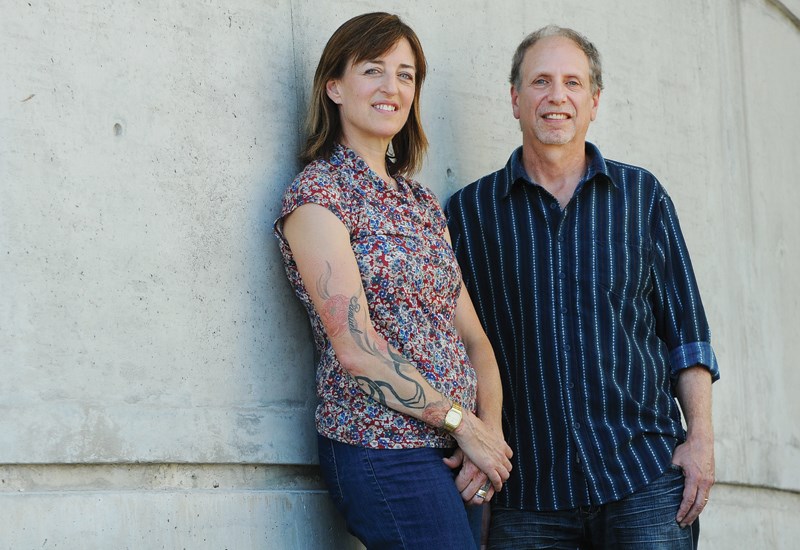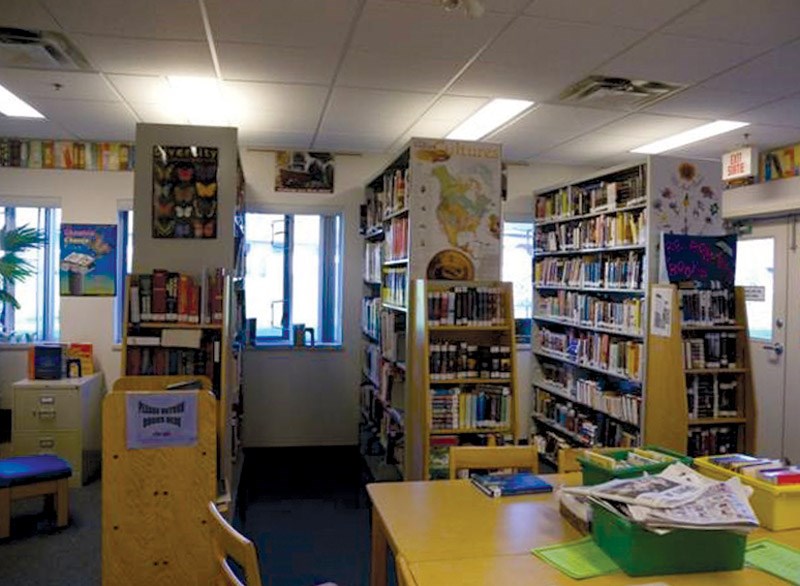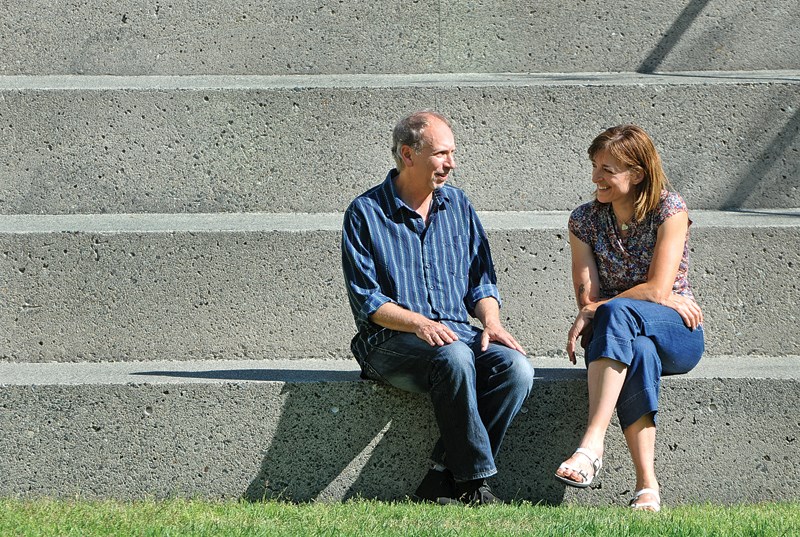The teachers don’t ask about their backstories.
The women acted out of desperation – this much is known.
A student is a student is a student in the eyes of an educator, whether they are in a classroom or the confines of a federal prison. Educators can’t ignore a thirst for knowledge.
“Why help prisoners? They have hurt someone,” critics tell these teachers, who face animosity in their literacy crusade.
Capilano University social sciences professors Kirsten McIlveen and Charles Greenberg have spent decades teaching students privileged enough to afford an education and fortunate enough to have family or social supports.
But education is a right for all, they argue. Even the incarcerated.
Almost 25 years ago a university credit prison program offered by Simon Fraser University was cancelled, despite the research showing a correlation between education and reduced recidivism rates.
Instead, McIlveen, Greenberg and other instructors volunteer time to impart their knowledge on the incarcerated.
Imprisoned women are the ones who need education the most, the teachers will tell you. Education equals empowerment. It’s what these women need to survive on the outside. To free themselves from a vicious cycle of victimization.
• • •
When McIlveen and Greenberg arrive at the Fraser Valley Institution for Women in Abbotsford, they have already driven for at least an hour. The teachers have jumped over many bureaucratic hurdles just to get their feet in the door of the prison.
“They don’t necessarily swing open the doors and welcome us in. They don’t stop Kirsten and the instructors from coming in, but it’s not something that they are so excited about,” says Greenberg.
The teachers undergo an intensive screening process. There are criminal record checks.
“When you go there (Fraser Valley Institution), sometimes you are swabbed. You go through metal detectors,” says McIlveen.
Greenberg admits he was a little nervous at first.
“Yeah, I was a little bit. You know, I’ve never been in a prison environment before. But I have also felt a need to reach out to a population that really has no access to this education – so I really wanted to see what it was like and do it.”
Once on the inside, the teachers soon realize it’s like any other learning environment and they relax. They can focus on passing their passion for knowledge on to the inmates.
Stereotypes are broken.
“The women are political, outspoken and they speak their minds, even under surveillance,” says McIlveen.
On McIlveen’s first-ever day of teaching at the prison, a woman from the maximum security side came over with two guards. The corrections officers stood in the classroom and watched over the inmates while they learned – for the first couple sessions.
“And eventually we never saw them again,” says McIlveen.
Greenberg describes the classroom as a seminar room, similar to one he would see at CapU. But he was initially jarred by the fact there were no computers or other technology scattered about.
“There was nothing. It was just a white board with a marker,” he says.
Computers are banned from the prison because of their ability to connect to the outside world.
“As instructors we are used to using PowerPoint, at the very least. So one of the challenges is delivering your classes … visuals are so important,” says McIlveen.
In this environment, the teachers revert back to an old-school teaching style. They bring in photocopied resource materials, pens and paper.
CapU’s geography department donated atlases, but they were outlawed by prison officials.
Once a week the women file into the room and take a seat around the seminar table. Greenberg could easily picture them as regular CapU students.
They are dressed in various styles, he says. “I mean I was a little surprised. One person was dressed up, I thought she was an administrator, but it turns out she was just there as an inmate student.”
The topics for the three-hour classes include gender roles and stereotypes, crime and punishment, addictions and colonization, and Canadian geography. Colonialism is examined in particular because the social science instructors see prisons as being an extension of that.
The crime and punishment course, meanwhile, allows the incarcerated women to take a critical look at the criminal justice system. They learn why people commit crimes, who these people are – in terms of ethnicity, gender and socioeconomic status – and how they are treated in prison.
The teachers’ approach to learning doesn’t change from the university to a prison setting. If anything, the inmates are the more engaged students.
Case in point are some classes on globalization Greenberg taught recently.
“There were some very complex concepts,” attests McIlveen. “And Charles didn’t dumb it down, but he made the language accessible.”
The weekly classes, held a couple of hours before dinnertime at the prison, are well received and well attended, both McIlveen and Greenberg report.
About 100 women live in the Fraser Valley’s federal prison, in three security level areas. Approximately half of those inmates are on the medium security side. That’s where McIlveen and Greenberg have clearance to teach.
Of those 50 inmates, about 20 show up for class. There are other places they could be. Some programs offered at Fraser Valley Institution include hairstylist apprenticeship, interior commercial painting, dog training, cooking, nail manicuring, jewelry silversmithing and horticulture.

Many hear about the CapU instructors through word of mouth in the prison, as “there’s not a lot of co-operation from the institution to promote it,” says Greenberg.
The veteran teacher can tell when students are engaged or tuning out. In his experience, the students in prison hang on to every word.
“I feel a connection,” says Greenberg. “Sometimes I finish a class (at CapU) and it’s kind of like the cabbage patch: you see all the heads but I don’t know how many are listening. In this case (the prison setting), you feel like everyone is so engaged and committed to wanting more.”
McIlveen had one woman say to her: “All week I look forward to this class, to be stimulated.”
A testimonial from another female inmate reads: “... all my life people have told me I’m worthless. After taking your class and liking the way I thought about things I decided to get my (high school equivalency) and I just finished my Grade 12 with straight As and I feel so empowered.”
Greenberg said he’s been moved by his experience in the prison.
“I felt appreciated. And there were students who couldn’t leave at the end because they were like: Thank you, thank you, thank you – as if I did something so heroic. I just did what I do every day.”
McIlveen and Greenberg wouldn’t ever cast judgement on the inmates.
“There’s a term: crimes of poverty,” says Greenberg. “They are in desperate situations and society has kind of left them in a marginalized, voiceless, vulnerable position.”
Eighty per cent of women imprisoned in Canada are behind bars for committing economic-related crimes, according to 2008 research done at Wilfrid Laurier University.
McIlveen, who has been volunteering in the women’s prison for two decades, sees a pattern.
“These women, so many of them have lived a life under stress because of poverty, because of violence in their life,” she says. “They have committed a crime so they are in prison, but our take is you need to look at it from a bigger systemic point of view.”
Indigenous people are over represented in the criminal justice system, observes McIlveen. “You will see mothers and daughter and aunties. And so it’s almost like a rite of passage for some groups. It’s unfathomable.”
More and more of these inmates have mental health issues, adds Greenberg. There are also more young people going into prison. Greenberg doesn’t have to guess why this is.
“I think the social safety net that Canada used to be known for has sort of been ripped away, particularly here in British Columbia, we know that,” he says.
Greenberg says so many “crucial” social services programs to help people on the Downtown Eastside have been eliminated, not to mention recent single-room occupancy hotel renovictions. He’s also made a list of programs for First Nations people in urban environments that were wiped out under the previous federal government.
“And the list is as long as your arm and then some,” says Greenberg. “It’s not surprising people are forced into desperate situations. It’s so sad.”

In Canada, prisoners have a legal right to be educated, states Shawn Bayes, executive director of The Elizabeth Fry Society of Greater Vancouver.
“The question is: To what level of education do you provide?” she says.
The Fraser Valley Institution provides inmates with basic literacy, and academic and personal development skills that are needed to succeed in the community, according to Correctional Service of Canada spokesman Jean-Paul Lorieau.
The Elizabeth Fry Society argues there is a need for all inmates to have at least level three literacy – a benchmark set out by the government that indicates what the average Canadian needs to function on an everyday basis. Being able to read a bus schedule or fill out a job application, for example.
“And if you really want to ensure public safety, you have to invest in enabling people to participate in society,” says Bayes.
A 2013 American study by think tank Rand Corporation, the largest ever conducted on education and incarceration, found direct costs associated with educating prisoners was estimated to be between U.S. $1,400 and $1,744, saving the government an estimated U.S. $8,700 to $9,700 in reincarceration costs. The report also found inmates were 43 per cent less likely to return to prison if they studied while on the inside.
It’s a challenge for education to be recognized and funded in Canadian prisons, says Bayes.
McIlveen will be looking at prison life with a magnifying glass when she starts her PhD at the UBC this fall, focusing on education and the practices of incarceration.
“In particular I will focus on the tension between punishment and education, which creates the paradox of post-secondary education in women’s prisons: higher education promotes critical thinking and questioning while the prison protocol requires compliance and punishes women when they question authority,” explains McIlveen.
Greenberg will take over teaching all the classes in the prison, starting in the spring.
The inmates don’t write any exams, tests or papers at the moment, as their informal post-secondary classes don’t count towards a degree – yet.
McIlveen, Greenberg and other instructors are involved in this educational program as a pilot project at the moment, with the support of CapU.
The eventual goal is the female inmates would take university transfer courses and earn credits from CapU and possibly UBC.
Ultimately, McIlveen wants to affect correctional policy and access to post-secondary education in prisons.
“It already existed. It was a model that worked. There was lots of research that supported it,” she says of the successful SFU prison education program.
From 1973 to 1993, SFU’s liberal arts prison education program operated in several B.C. prisons. At its peak in the early 1990s, there were programs at four prisons enrolling about 50 prisoner-students every 13-week semester.
Despite the links between post-secondary education and rehabilitation, the SFU prison program was cancelled during a government budget reduction process in 1993.
“I’m trying to reignite that model with a focus on educating female inmates,” says McIlveen.
It’s been a learning experience for McIlveen and Greenberg too. The female inmates have taught McIlveen about feminism, community, traditions and social hierarchy.
Greenberg, meanwhile, says it’s empowering as an instructor to feel like he has reached out and made a difference.
He says it speaks to the transformative powers of education.
One female inmate told Greenberg: ‘All my life, men have told me I’m worth nothing and now I realize that I’m smart.’
“Everything else you can take away from someone but education – you have that for the rest of your life,” says Greenberg.



